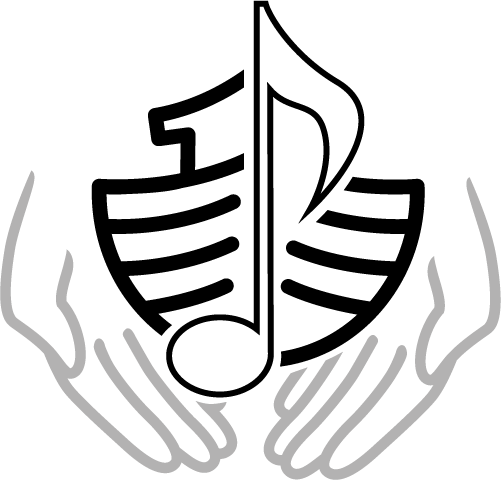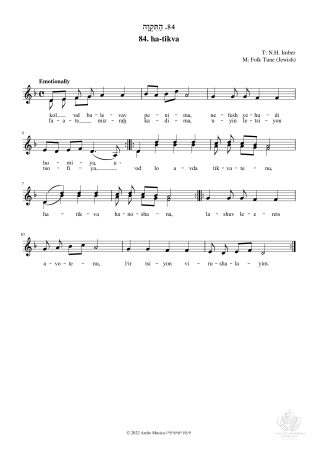התקוה | Ha-tikva | The Hope (1912)
Artist: Abraham Zvi Idelsohn (1882-1938)
Lyrics: Naphtali Hertz Imber (1856-1909)
Tune: Folk Tune (Jewish)
This song is best known today as the national anthem of the State of Israel. It was written by Naphtali Hertz Imber (1856-1909) between 1884-1887 in Iasi, Romania. The text, nine verses long, was published in Imber's book of poems Barkai [Morning Star] in Jerusalem in 1886 under the title “Tikvatenu” [Our Hope]. Idelsohn included five verses in Sefer Ha-Shirim. The Israeli hymn includes only the first verse.
“Ha-tikva” expresses the hope of returning to Zion. The last verse runs: "Listen brothers, in foreign lands, to the voice of our prophet", meaning, listen to Binyamin Zev Herzl (1860-1904), the founder of political Zionism, and come to Erets Yisrael.
In 1887, Shmuel Cohen adapted the lyrics of “Ha-tikva” to a Moldavian melody known as "Carul cu boi" [Wagon and Oxen] in the Jewish settlement of Rishon Le-Zion. In his Table of Contents in Sefer Ha-Shirim, Idelsohn designated the melody as "Polish" (using his term for Yiddish song, although it was not, in fact, a Yiddish song); above the musical notes, he wrote, "folk tune". Variants of the melody can be traced back to fifteenth-century Jewish and non-Jewish European tunes. The melody is in a minor key.
Included in
Scores
Original (PDF) Modernized (PDF)

